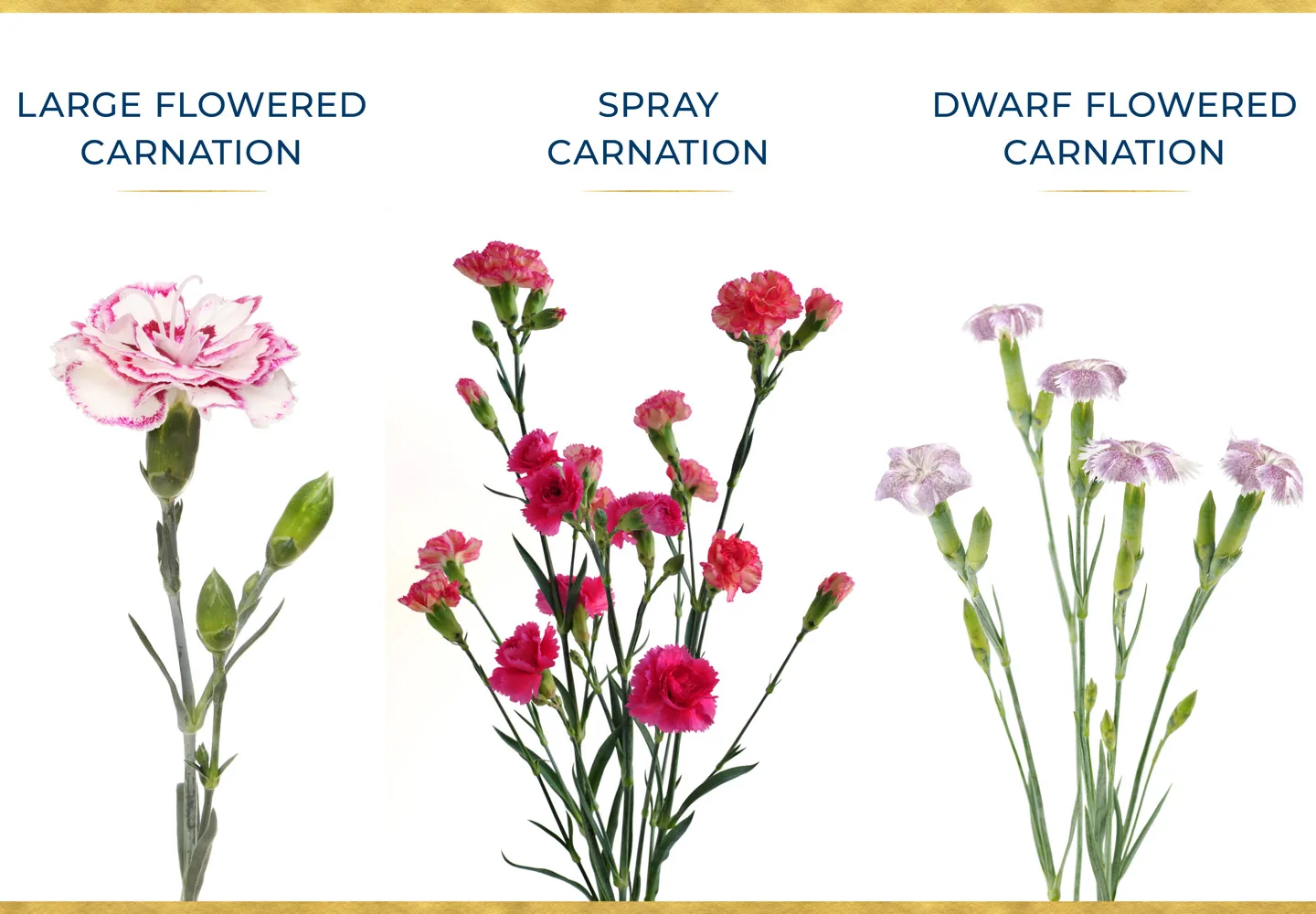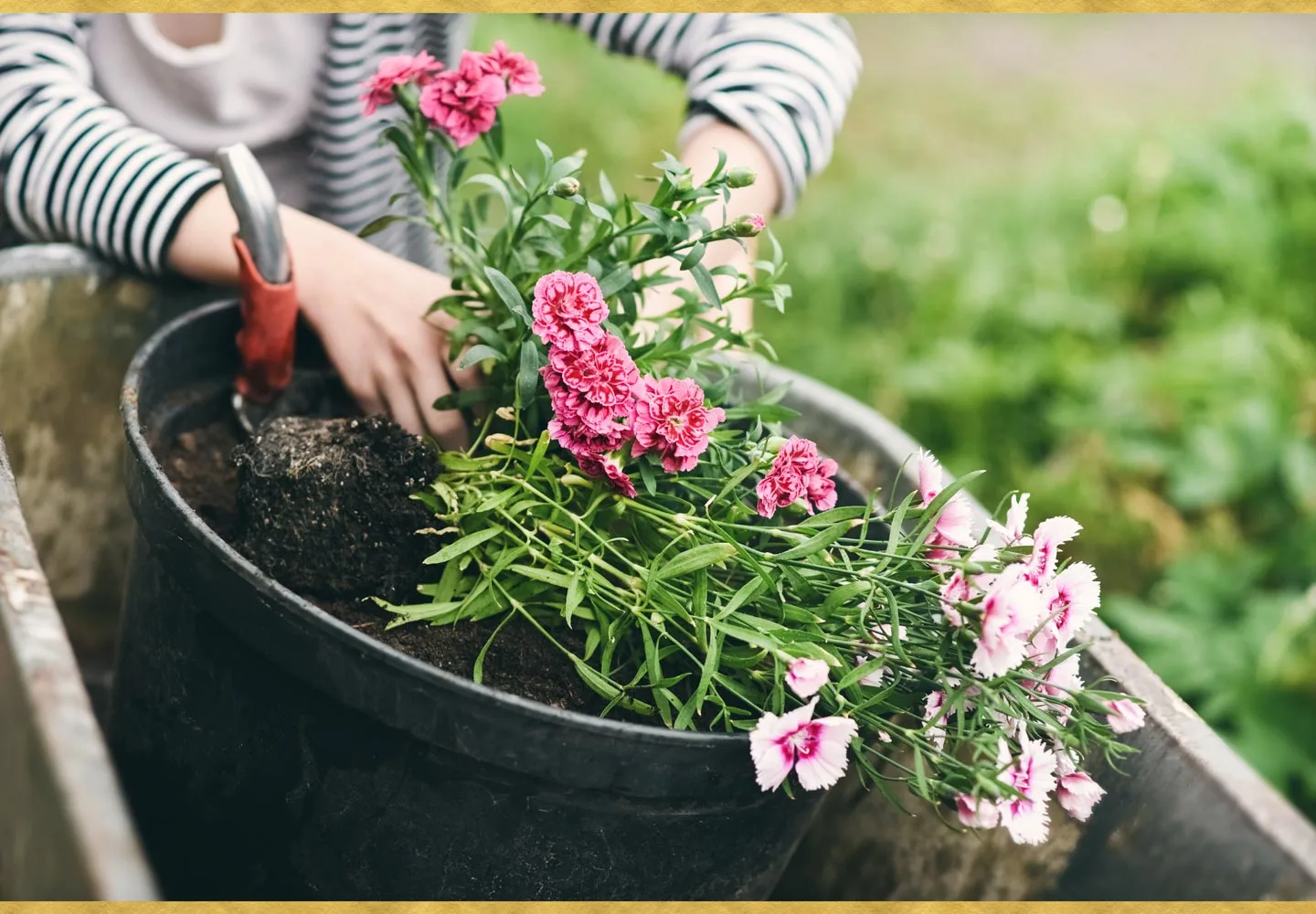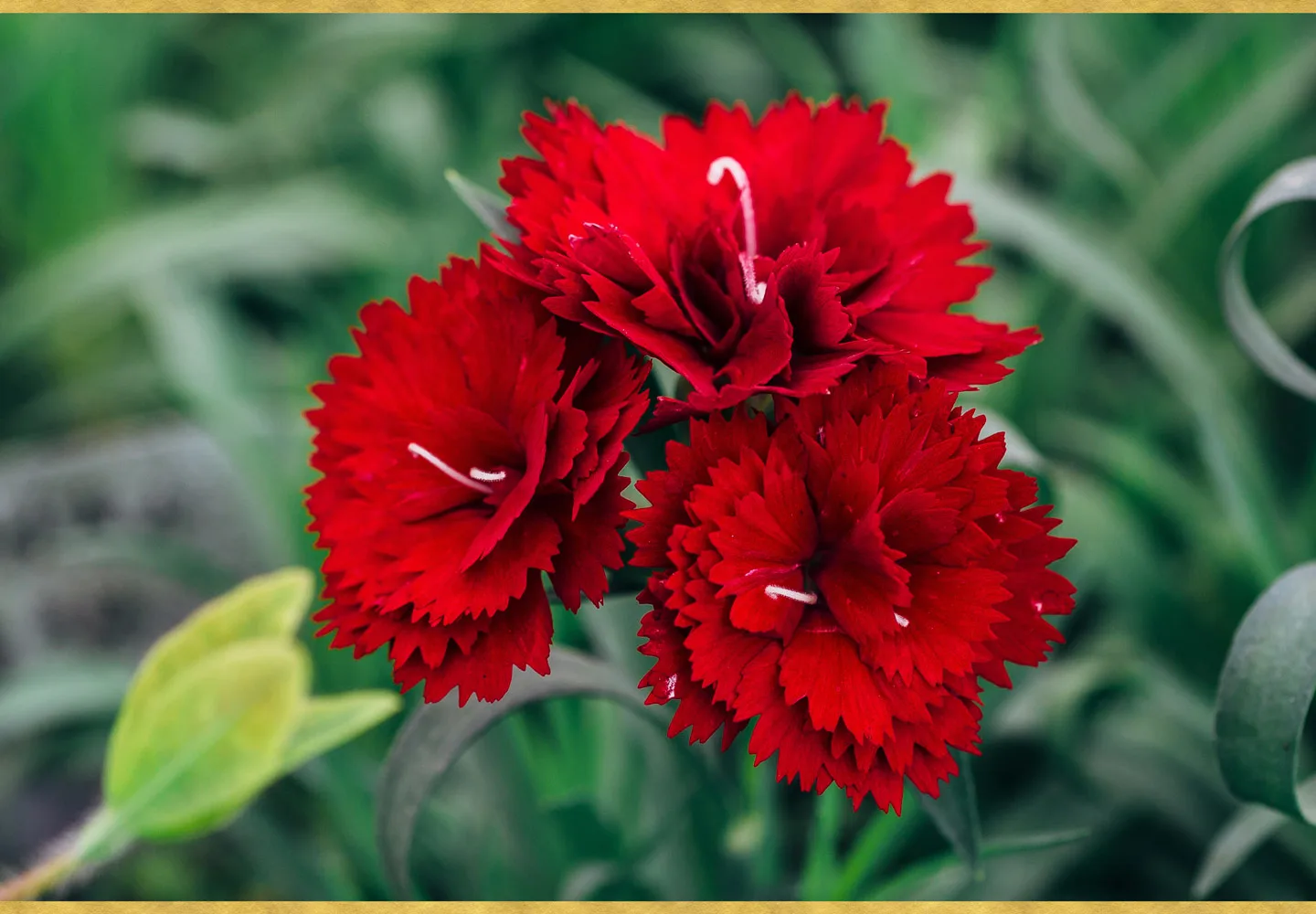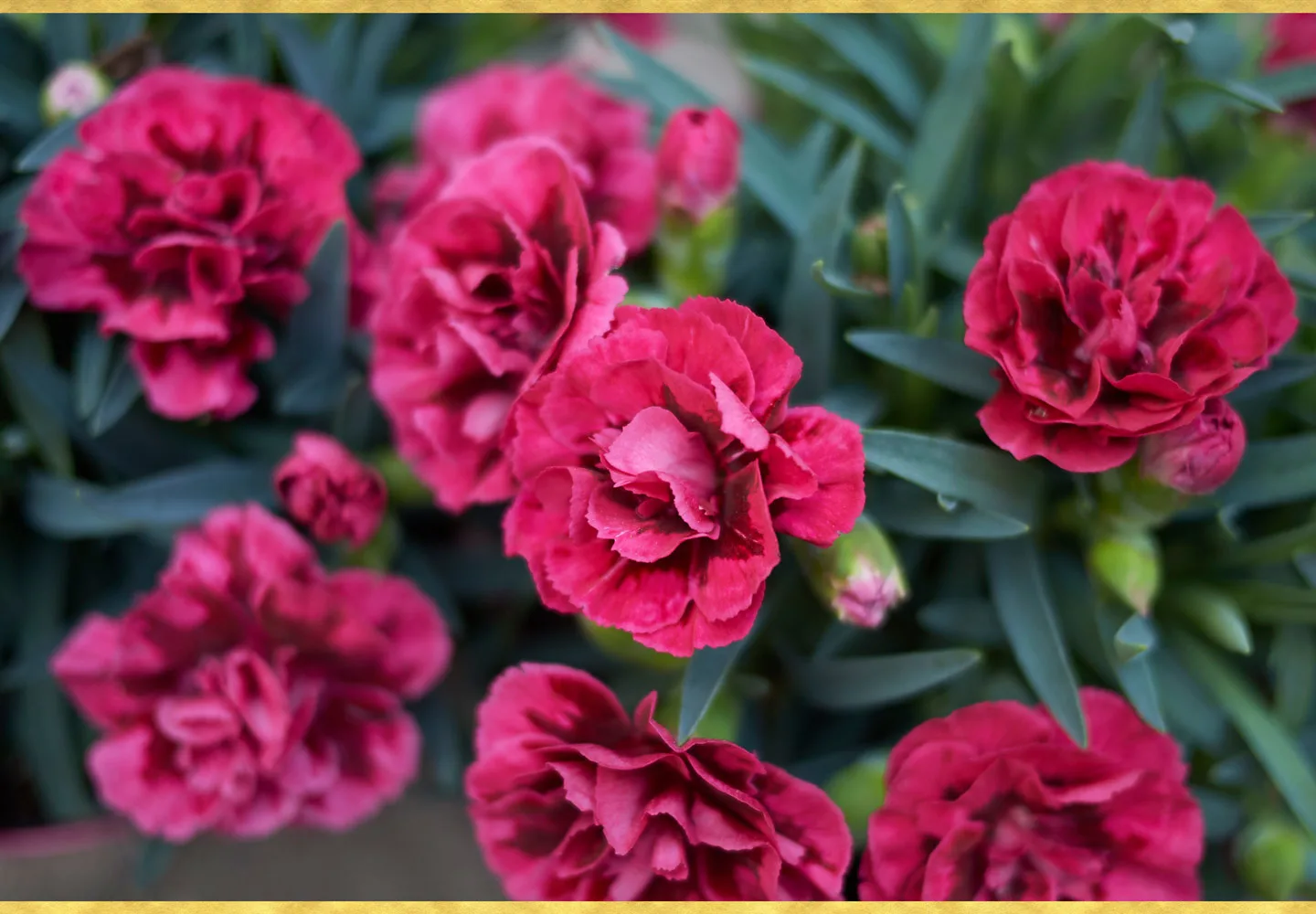September 28, 2018
A Guide to Growing Carnations
Carnations, also known as Dianthus caryophyllus, symbolize fascination, distinction and love. They are traditionally given as a Mother’s Day flower to represent gratitude and affection.
Carnations’ meaning and symbolism make them a popular choice for gifting to a loved one in the form of a carnation bouquet. Not only are carnations used for decorative purposes, but they are brewed in teas and utilized in skin-moisturizing beauty products.
Looking for advice on growing carnations? Whether you are starting from the seed or just need some carnation care tips, our guide will help you grow beautiful carnation varieties in your own backyard.
Types of Carnations
Carnations are a popular choice for the garden due to their bright colors and wide variety. Carnations come in annual, biennial and perennial types, so depending on your space, there is sure to be a variety that will fit your garden. These versatile plants can be planted in flower beds or grown in containers such as pots.
The three popular types of carnations are large flowered carnations, spray carnations and dwarf flowered carnations. Large flowered carnations, or the florist’s carnation, have one large bloom on a stem and can grow to be 18 to 24 inches high. Spray and dwarf carnations have many smaller carnation blooms per stem and grow to be 9 to 12 inches high. These are the ones usually found in a garden.
How to Plant Carnations
Carnations should be planted in an area that gets four to six hours of sunlight per day. They prefer sunlight rather than shade, so keep this in mind when deciding on their placement. When planting carnations, be sure to use well-drained soil that is fertile and slightly alkalized (pH 6.7-6.9). If the soil is too fertile or water absorbant, the flowers won’t bloom properly or they’ll become discolored. Carnations will grow best in temperatures that are 50-65 degrees during the day and 40-50 degrees at night.
Growing Carnations From Seeds
Plant carnation seeds in a well-drained soil mix, an eighth of an inch deep. Seeds should be spread at least 12 inches apart. Be wary not to overwater the seeds, especially in the beginning stages. A light watering should be done two to three times a week. Feel the soil before watering to be sure it has dried since the last watering. The seeds will begin to germinate in two to three weeks.
Growing Carnations From Cuttings
A majority of professional carnation farmers grow carnations from cuttings. To do this, they use cuttings from terminal flowers (ones that form at the end of the sprout rather than where the stem and branch meet). These cuttings should be 4 to 6 inches. The propagation requires them to be inserted into pure sand and in 25 to 30 days they’ll be ready for transplantation.
Growing Carnations From Division
To revive an old carnation plant, you can divide the plant segments to create multiple plants. Dig up the clump of flowers and pull apart the plant segments (with your hands or garden tools). Replant these divisions in the same manner you would a new perennial or annual, being sure to water them well. This should be done every two to three years to keep your carnations healthy.
Planting Perennial and Annual Carnations
You should plant perennial carnation seeds in late fall to early spring. You can plant carnation cuttings in May, while planting divisions should be done late on in the fall.
Planting annual carnation seeds can be done two ways. Either plant the seeds in March under a shelter and transfer them to pots in the spring, or plant them directly in the ground from April to May.
Carnation Care Tips
Carnations are one of the easier flower varieties to care for. Their upkeep is straightforward, and cut stems can last up to several weeks.
Carnations should have four to six hours of sunlight a day.
Water plants two to three times a week. If the petals or foliage begin to turn yellow, it’s a sign of overwatering.
To promote reblooming, remove any dying blooms or leaves.
Mulching is not advised because it prevents sufficient air circulation.
Carnations aren’t usually bothered by pests, so there is no need to apply pesticides.
Allow enough circulation between plants to prevent mold, fungus and mildew.
Tall varieties of carnations may need a support that holds up the stem as the plant grows.
If the soil needs more nutrients, you can use peat; it’s a common manure used for carnation growing
Browse our carnation bouquets to get inspiration for displaying your fresh carnation blooms.
Sources:
The Flower Expert I HGTV I Organic Gardening Advice I Nature & Garden





